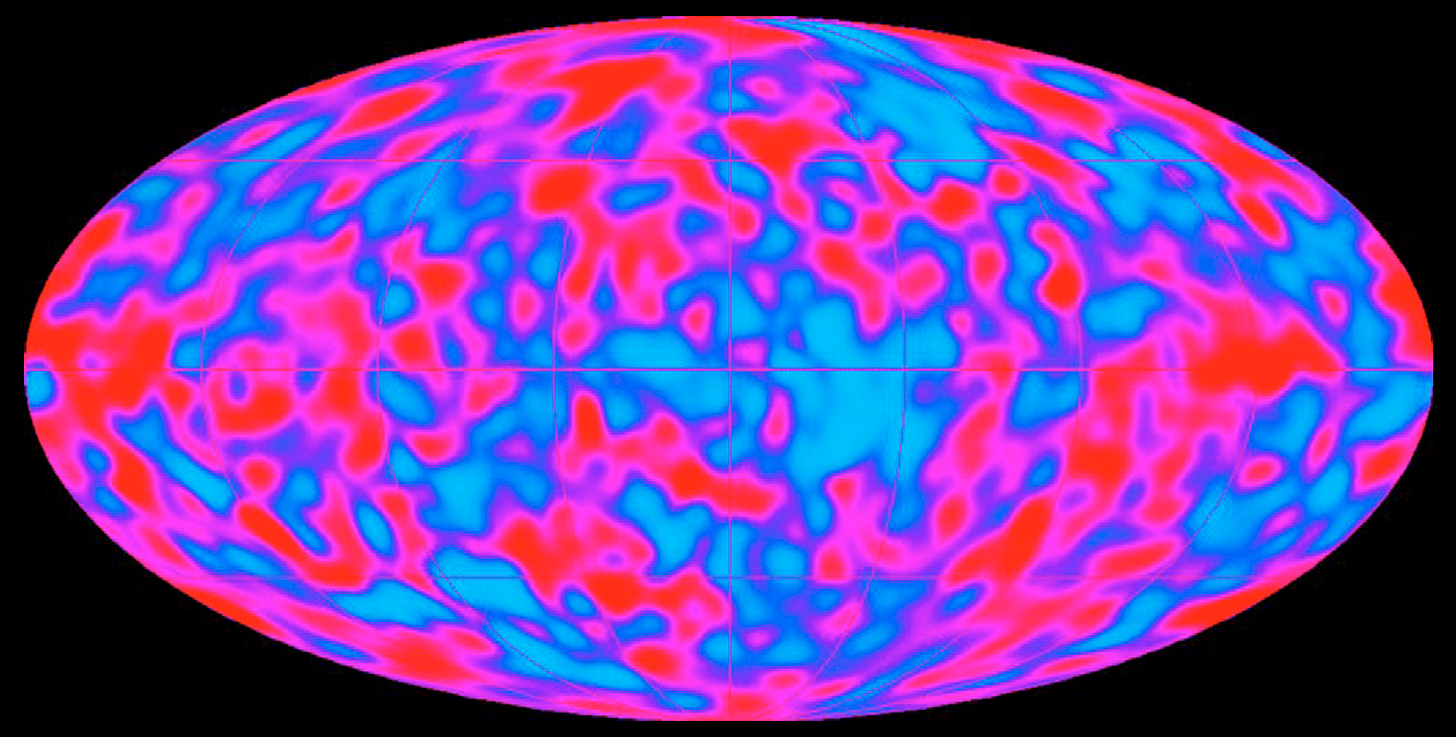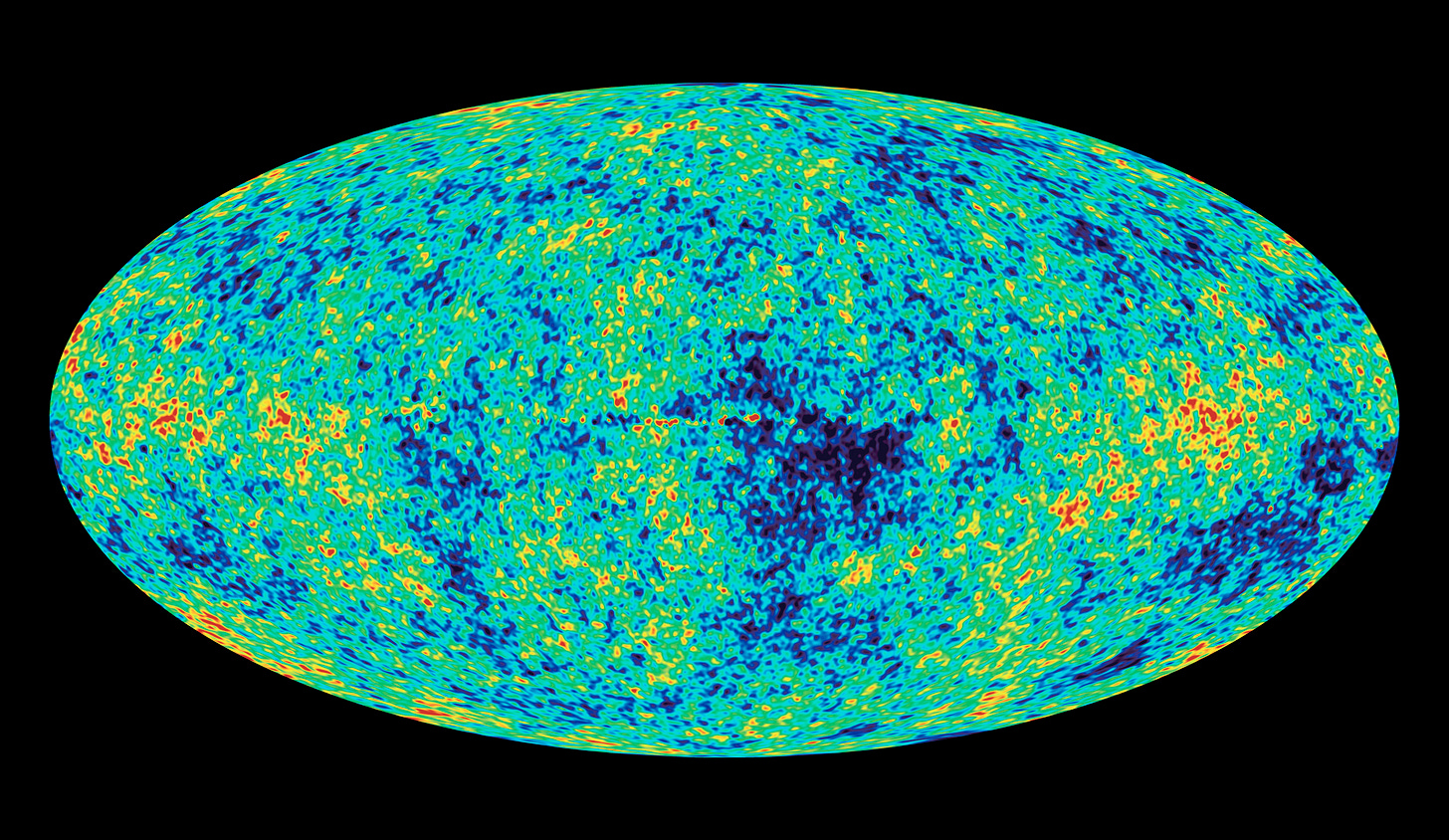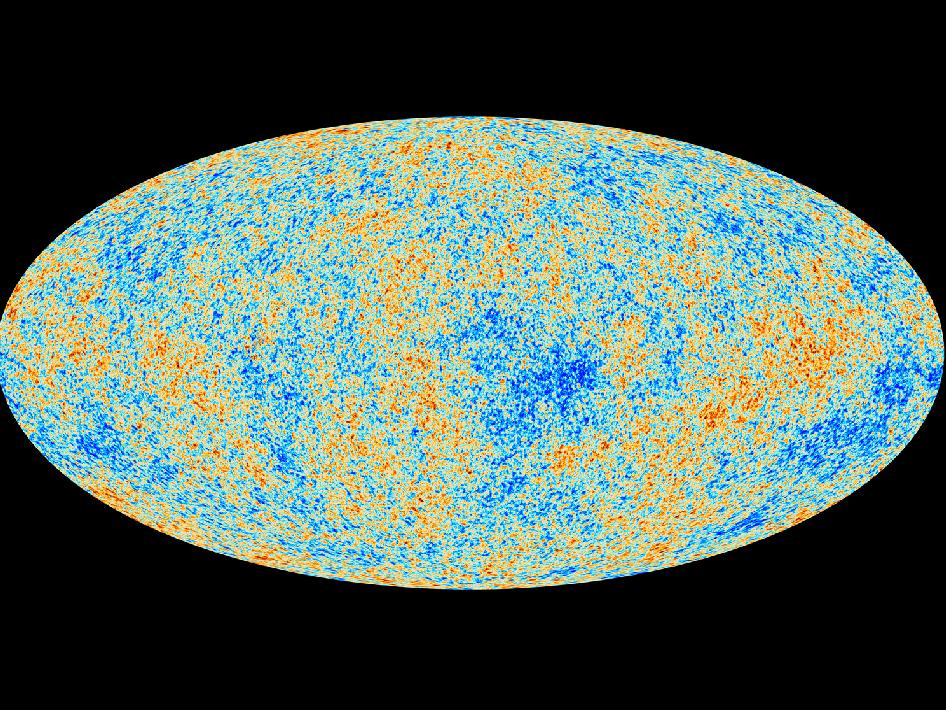But what is exactly the "Last Scattering Surface"?
If you know, don't keep it to yourself! Go out and shout it to your friends and family. If you don't know, wait until you have read this post. Then read again this subtitle.
und einsam
Unter dem Himmel, wie immer, bin ich.
Friedrich Hölderlin - Abendphantasie
To understand why this project is called this way, we need to clarify what means in Cosmology to have a surface of last scattering.
To get this, we need to understand what happens in the Universe - actually, what happened in the first millennia of its life.1
In this scenario, the Universe is characterizable as a relativistic2 fluid. In addition, every component interacts with every other, and the fluid is in thermal equilibrium (there is not any heat flow).

As time passes, the Universe expands and cools down, rendering it possible for electrons to bond with protons to form the simplest atom (spoiler - Hydrogen atom).
This era of the history of the Universe is often called the “recombination era”, even though there was not a previous time when these components “combined”. So “recombination era” is just a funny name.
The components of the Universe at the time of our investigation are primarily photons, protons, electrons, and hydrogen atoms.
Unlike the early days, a colder Universe is not fully ionized. There are single charges freely flowing in space, and that’s why the rate of scattering3 falls.
When the rate of ionization has fallen, the photons have nothing to interact with and don’t scatter with the matter, starting to “free stream4” into the Universe as it expands.

From now on photons will travel in the Universe, containing as a whole the information about their temperature (photons are the basic constituents of the electromagnetic radiation, that displays in a spectrum, with a more probable temperature and a high energy tail at the end of their spectrum), that drops as the Universe expands.
The Temperature of this “Cosmic Background Radiation” (CBR) is measured to be:
where K stands for Kelvin (the only correct way to measure temperatures - sorry Celsius, not sorry Fahrenheit).
We said that the CMB cools down with the expansion. This means that when recombination started and finished the era of matter-radiation interaction, the CMB had a different temperature.
One can calculate the time t this happened, the temperature T at which this happened, and the relative redshift5.
Now, let’s be said that is not like CMB photons won’t ever interact with anything anymore. It’s just that this won’t happen as frequently as when the radiation was coupled with matter.
So this sea of photons will continue to travel through the Universe as it expands, cooling and expanding.
To visualize this surface, we could first try to look at the best image we have of the background radiation (parametrized by its temperature) as it is today. Here it is:

We said that the temperature is almost 3 K: then why are there differences in this image, and it’s not just one color?
That’s because there are indeed some little anisotropies, due to various phenomena, but primarily because different parts of the Universe evolved in slightly different ways. The different colors show that there are cooler and hotter parts of the Universe.
So what is the last scattering surface? It’s this huge wall of photons that continuously travel towards the outer parts of the Universe (why, are there also inner parts of the Universe? Is there a center6? ) like an opaque window that renders it impossible to look beyond.
That's it for today. We hope to have motivated you to look upon this subject. If you want to look closely and deeply into the rabbit hole, here are some books/articles/links to enjoy. Hope to hear from you soon!
Cosmology - The Origin and Evolution of Cosmic Structure; Peter Coles, Francesco Lucchin; Wiley
Cosmological Physics; John A. Peacock; Cambridge
https://www.mpg.de/7044245/Planck_cmb_universe
And here is some music to help you surf this Last Scattering Surface:
See you soon! (and if you liked subscribe!)
With “life of the Universe” we technically mean the time that flows from the start of the metric.
Relativistic means that its components have energy almost entirely made out of their momentum and that their mass is negligible.
Scattering is when particles (or particles and radiation) interact.
One example of scattering is aurora borealis, which happens when cosmic rays interact with the atoms and molecules of the atmosphere - in many ways - hence the many nuances of the northern skies.
free streaming is what happens when a component of a fluid (i.e. the components of the Universe) does not interact anymore. You can visualize it like this: interaction in an expanding fluid can happen when the time the interaction takes place is lower than the time of expansion - this is the time the fluid expands at some fixed velocity. But at some time something happens and the role is reversed: now the time of interaction is bigger than the time of the expansion. This means that it would take more time for the interaction to happen than the time the fluid takes to expand. So the particles don’t interact.
redshift z is defined in general as the difference between the measured wavelength of the radiation and the emitted wavelength, normalized to the emitted wavelength.
this quantity is often interpreted in Cosmology as being related to the recession velocity of the Universe. We’ll probably talk about this some other time.
not really.




